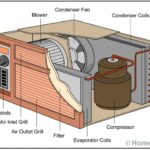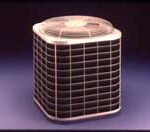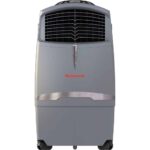Expert advice on the pros and cons of a ductless mini-split air conditioning, how a ductless AC unit differs from other AC, and how to buy and install ductless mini-split AC.
Ductless mini-split AC systems (also called mini-split heat pumps) have become very popular in recent years, thanks to several advantages over window and portable air conditioners, and the relative affordability of these compact AC units compared to whole-house air conditioning.
A ductless mini-split air conditioner may be just the answer if a single room or area in your home needs better cooling and heating.
In this article, we discuss the pros and cons of ductless mini-split air conditioning, show you how these heat pumps differ from traditional air conditioners, and give you expert advice on how to buy and install a ductless mini-split AC.
What Is a Ductless Mini-Split AC?
As the name “ductless mini-split” implies, this air conditioner doesn’t have ductwork, is relatively small, and is split into two main parts. It has an outdoor compressor/condenser and an indoor evaporator/air handler unit that, in most cases, mounts on a room’s wall or ceiling. Less common indoor evaporator/air handlers are freestanding or built as a cassette that can be recessed into the ceiling.
A mini-split AC unit can connect one outdoor compressor to from one to eight indoor evaporator units, located in different rooms. With multiple indoor evaporator, you can create “zoned” heating and cooling in your home, where different zones are each controlled separately by their own thermostats. You just heat or cool when and where you want.
You can buy mini-split air conditioners as kits that include one compressor and one, two, or more indoor evaporator units.
A mini-split AC kit also includes all the attachment and mounting parts, such as refrigerant hoses (called “line sets”) that connect the compressor to the evaporator(s). These hoses route through a relatively small (typically 3-inch) hole in an exterior wall.
Is a Mini-Split Better Than a Conventional Air Conditioner?
When it comes to cooling a single room or area in a home, renters and homeowners have traditionally opted for a portable air conditioner or one that plugs into a window or wall. For more about these, please see Buying the Best Window Air Conditioner or Room AC Unit.
Or, another answer for some homeowners is a central air conditioning system. Though this cools an entire house, it is the most expensive solution, costing $3000 to $7000 or more in most homes.
A mini-split air conditioner falls between these two main types of air conditioning, offering some of the advantages of both.
• First, it both heats and cools. A mini-split AC is actually a heat pump that will both cool and heat. It uses refrigeration technology for both cooling and heating. In the heating mode, it extracts heat from the cold outside air and delivers it to your rooms. This process is much more energy efficient than creating heat from electric resistance or burning fuel such as gas or oil.
• Because it uses heat-pump technology, it operates more efficiently than a conventional air conditioner or furnace. This stated, in a particularly cold climate, some mini-split AC units may heat as effectively or affordably as a gas furnace. So, if you live in such a region and you’re thinking about buying a mini-split for heat, be sure to get one that has the capacity to meet your heating needs. See more about this in Mini-Split Output, Size & Efficiency, below.
Mini-Split Advantages Over Room Air Conditioners
Mini-split AC units are more expensive than window, room, and portable AC units. In fact, they can cost twice as much, or more (see How Much Does a Mini-Split Cost?, below).
But, to make up for the cost, you get these advantages:
• A mini split AC is less intrusive than a window or wall air conditioner. The component that goes in the room mounts at the top of the wall or the ceiling instead of filling-up a window or penetrating the wall. As a result, you don’t have an ugly AC unit poking through the wall or sitting in the window where it obstructs your view, blocks natural light, and presents a security issue.
This isn’t to say that a mini-split is inconspicuous. The evaporator unit mounts on the room’s wall or ceiling, usually in clear view, though some can be recessed into the ceiling.
• A mini split AC is quieter inside the house. Like a central AC’s compressor, its noise is outdoors, not in the window or room AC unit where it’s a loud nuisance. In fact, the outdoor compressor can be located as far as 50 feet away from the indoor unit—so you can position the noisiest part out of earshot. This stated, the wall-mounted unit of a mini-split AC does have a fan for circulating the heated or chilled air. Most modern models are quiet, but some are nosier than others.
How Mini-Splits Differ from Central AC
Like the mini-split, a conventional whole-house central air conditioner has an outdoor compressor and an indoor evaporator/air handler (often the furnace). In addition, it has a system of ductwork that distributes and cycles conditioned air throughout the house.
Ductless mini-split air conditioners are different in these ways:
• They target a specific cooling or heating need. The beauty of a ductless mini-split AC is that it’s small, flexible, and meant to pinpoint heating and AC needs. Because it will heat or cool a single room or area, you can make that area more comfortable without wasting energy by heating or cooling the entire house.
• A ductless mini-split is far easier and less expensive to install than whole-house air conditioning because it doesn’t involve routing ductwork throughout the house.
• The absence of ductwork reduces energy loss that otherwise occurs through leaky or uninsulated ducts. Energy.gov estimates that this alone saves more than 30% of heating or cooling costs, and ENERGY STAR certified ductless mini-split heat pumps use 60% less energy than standard home electric resistance-based heating systems (Source: Energy.gov) because they transfer heat instead of generating it.
• Ductless mini-split heat pumps go where ducted systems can’t easily go. They are ideal for serving any room that isn’t easily reached or served by the home’s existing heating and cooling system. For example, they can cool and heat a converted attic or basement, a bonus room, or a garage workshop without the mess and expense of retrofitting ductwork.
• Mini-split units can add cooling to a home that doesn’t have a ducted central forced-air heating or cooling system, such as a home with radiant heat.
• Mini-splits can cool and heat without increasing the load on an existing AC system. They are great for any room that was added after the home’s central forced-air system was installed—especially if the room cannot be connected by ductwork to the home’s forced-air system.
• A mini-split AC unit isn’t all or nothing. In other words, it doesn’t just blast away at full speed when it’s on. It has variable compressor that speeds up or slows down based upon need. As a result, it saves energy.
Mini-Split AC Size, Output and Efficiency
The output and efficiency of all air conditioning systems are rated by BTU and SEER ratings. When sizing and buying equipment for your home, you definitely need to pay attention to these ratings.
BTU Output
Short for British Thermal Unit, BTU is a measure of size, or more specifically, output of heating and air conditioning equipment.
The BTU is a standard measure of how much energy it takes to create heat. The higher the BTU rating, the greater the output of the equipment.
Mini-split AC units can range from 9000 to 54000 BTU. For more, see What Is a BTU?
SEER Ratings for Cooling
A SEER measures a heat pump’s efficiency when in the cooling mode.
To minimize wasted energy, the U.S. Department of Energy established minimum efficiency standards for air conditioners.
Every AC unit has a SEER, which is short for Seasonal Energy Efficiency Ratio. This important rating is listed on the yellow Energy Guide® label posted on each unit.
The higher the number, the more efficient the equipment is at using energy to provide cooling. In other words, a high SEER means lower energy bills.
SEER ratings on mini-split AC units start from a minimum SEER of 15. Units with Energy Star® compliance typically range from SEER of 20 to 25. You can buy equipment with a SEER as high as 35, but cost can be prohibitive.
HSPF Rating for Heating
HSPF measures a heat pump’s efficiency in the heating mode. HSPF is short for Heating Seasonal Performance Factor. It considers the amount of electricity needed over a heating season for a heat pump, including supplementary electric heat. This number is particularly important in cold climates, where a heat pump must provide significant heat—thus calling upon expensive supplementary electric heat—during the heating season.
The higher the HSPF, the less energy a mini-split AC uses to produce heat. The minimum HSPF rating for a heat pump produced after 2015 is 8.2. An HSPF of 9 is considered efficient. If you live in a climate with extremely cold winters, consider opting for a unit with an HSPF of 12. For a list of qualifying products, see the Northeast Energy Efficiency Partnerships site.
How Much Does a Mini-Split AC Cost?
Variables such as BTU output, SEER, and HSPF affect the price of equipment. The more powerful and efficient the system, the more it will cost.
Inexpensive mini-split systems are available for as little as $700, or you can pay as much as $7000 for a top-of-the-line system.
To figure the cost of a unit for your home, you’ll need to narrow-down the capacity and complexity of system you want.
Equipment Costs
According to HomeAdvisor, the average cost of a 12,000 BTU one-ton unit with one indoor component and a SEER rating of 21 will run from $1000 to $4,000, depending on the maker and type of mounting. This stated, the cost of a system can run as high as $14,500.
Installation Costs
For installation labor, expect to pay from $800 to $1500 per zone or area.
Unless you buy a mini-split system specifically designed for DIY installation (see more below) and you have the tools and skills to install it, expect to pay from $300 to $1,000 for installation.
Other Costs
The equipment and installation labor are not all you’ll need. You might also need to upgrade electrical, and you’ll probably need a concrete pad to support the outdoor compressor.
Many systems require a dedicated electrical circuit, which can cost from $250 to $400 to have professionally installed. If adding this circuit calls for upgrading your electrical panel, expect to pay an average of $1,100 for the panel upgrade.
The outdoor unit for most systems must stand on a small concrete pad. This will generally cost from $75 to $150. You can also locate the compressor on a mounting bracket attached to the wall.
How to Install a Mini Split AC Yourself
With most mini splits, the basic equipment is relatively easy to install for an experienced do-it-yourselfer. But the refrigeration line sets are a different story—they must be charged by a professional HVAC person. For this reason, it’s usually best to have a pro install the entire system. However, we have found one mini-split system that lends itself to DIY installation.
Mr. Cool makes a do-it-yourself mini split AC that is relatively easy to install. With the Mr. Cool system, the lines come pre-charged so hiring a pro isn’t required. You will need basic tools and skills, and some minor electrical work is required. You may need to hire an electrician for this part if electrical work isn’t among your skills.
Here is a really clear, excellent video by April Wilkerson that shows just how easy this job is. She installs a Mr. Cool mini-split herself—with the help of her mother—in a couple of hours. You’ve got to love it!
Here is another video that shows similar installation with a couple of minor changes. In this video, by Pahjo Designs, you can see how the unit is installed in a workshop. It includes setting up the unit to connect to the Wifi so it can be controlled from a phone app. Unlike the first video, it doesn’t show how to make the electrical connections.
Note: After review, the maker of this video decided to pull the excess refrigeration line set inside and box it out of view. Be sure to follow the manufacturer’s instructions explicitly in regard to the routing of the refrigerant lines.
We have one more well-done video to show you how to install the Mr. Cool DIY mini split AC. We recommend that you watch all three of these videos so you can gain a full picture of the process. Each deals with a couple of variations.
This one shows how to run the refrigeration line set through a hole in the wall and up into the attic, where it’s out of sight. It does a good job of showing how to use a separate cover kit to hide the refrigeration line. It also details making the connections with both the electricity and the refrigeration line.
As all three of these videos show, do not loosen or remove the refrigeration connections once you’ve opened up the refrigerant valves. Doing so will allow the refrigerant to escape. If that happens, you’ll need to have an HVAC person recharge the lines.



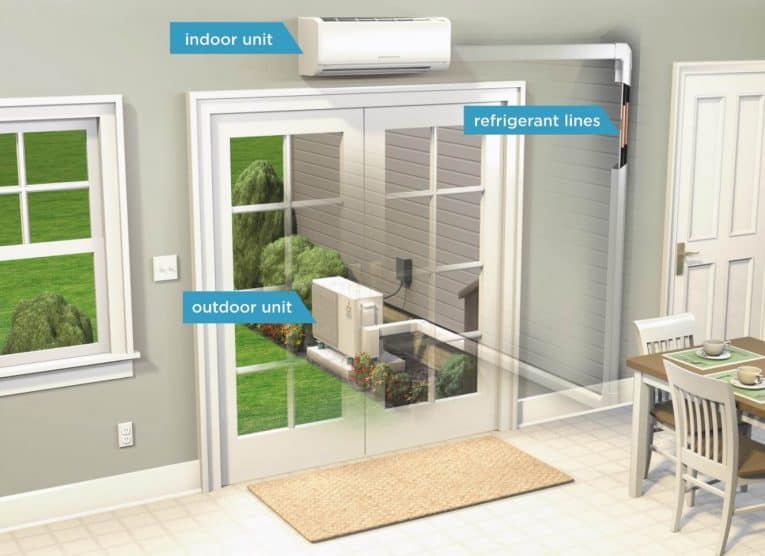
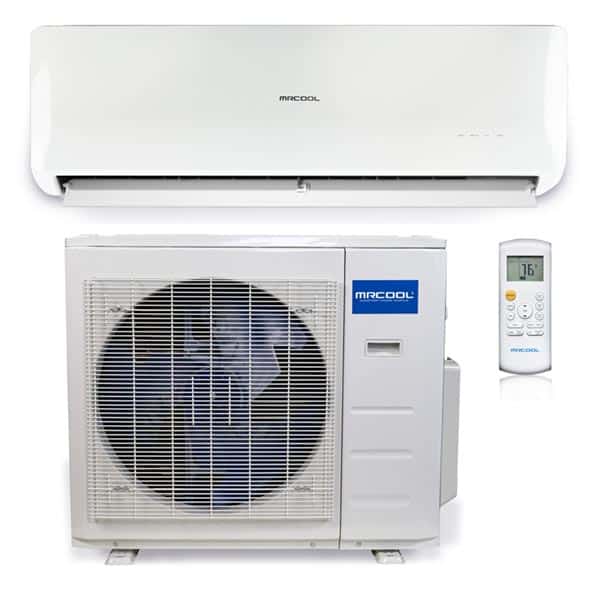



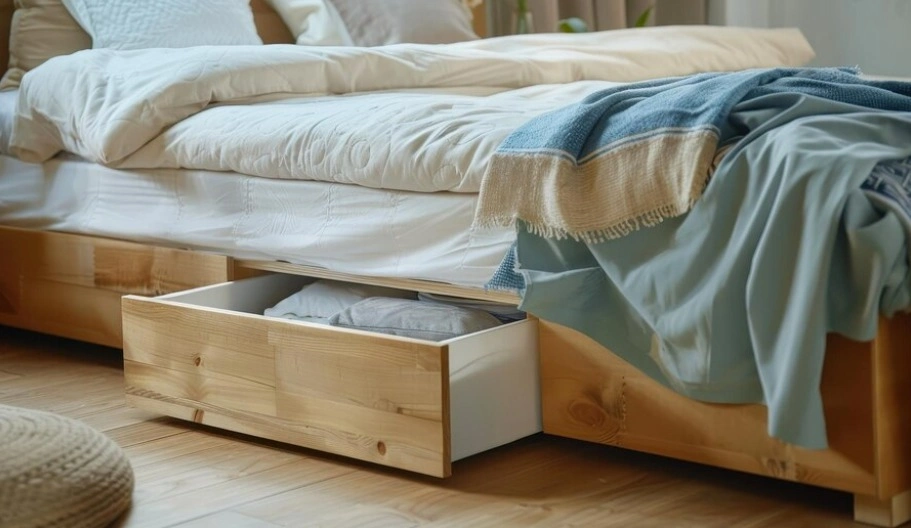
 Don Vandervort writes or edits every article at HomeTips. Don has:
Don Vandervort writes or edits every article at HomeTips. Don has:
